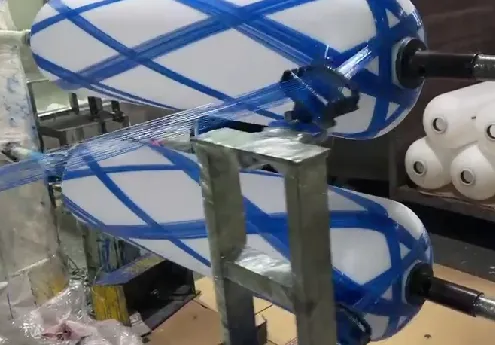loading...
- No. 9, Xingyuan South Street, Dongwaihuan Road, Zaoqiang County, Hengshui, Hebei, China
- admin@zjcomposites.com
- +86 15097380338
- Welcome to visit our website!
metal bar grating
The Versatility of Metal Bar Grating
Metal bar grating serves as an essential component in various industrial and architectural applications. Composed of sequential metal bars that are welded or pressed together, metal bar grating offers a unique combination of strength, durability, and versatility. This article explores the different types of metal bar grating, its applications, benefits, and considerations for selection.
Types of Metal Bar Grating
Metal bar grating is available in several materials, including steel, aluminum, and stainless steel. Each choice offers distinct advantages based on the application requirements
1. Steel Bar Grating Known for its exceptional strength, steel bar grating is often used in heavy-duty applications and environments where high load-bearing capacity is crucial. It is typically coated with a protective layer, such as galvanization, to prevent rust and corrosion.
2. Aluminum Bar Grating Lightweight yet strong, aluminum bar grating is preferred for applications requiring resistance to corrosion and rust. It is commonly used in environments exposed to moisture, such as wastewater treatment plants and marine facilities.
3. Stainless Steel Bar Grating For applications that require the highest level of corrosion resistance, stainless steel bar grating is ideal. It is commonly used in food processing, pharmaceutical, and chemical industries, where hygiene and the prevention of contamination are paramount.
Applications of Metal Bar Grating
The applications of metal bar grating are wide-ranging, spanning various industries and sectors
- Industrial Flooring Metal bar grating is extensively used as a flooring solution in factories, warehouses, and industrial plants. Its open design allows for optimal drainage of liquids and prevents the accumulation of debris, ensuring a safer work environment.
- Walkways and Platforms In both industrial and commercial settings, metal bar grating provides safe and reliable walkways and platforms. The grating's non-slip surface reduces the risk of accidents, making it suitable for areas with foot traffic.
- Ceiling and Sunshade Solutions In architectural applications, metal bar grating can be utilized as ceiling panels or sunshades. Its aesthetic appeal, combined with functionality, contributes to the overall design while allowing light and airflow into indoor spaces.
- Drainage Systems Metal bar grating is a crucial component in drainage systems, particularly in areas prone to flooding. The open design permits efficient water flow and prevents blockages, making it a popular choice for stormwater management solutions.
metal bar grating

Benefits of Metal Bar Grating
1. Durability and Longevity Metal bar grating is designed to withstand harsh environmental conditions and heavy loads, ensuring long-lasting performance. Its inherent strength minimizes the need for frequent replacements.
2. Cost-Effectiveness While the initial investment may be higher than alternative materials, the longevity and reduced maintenance requirements of metal bar grating lead to cost savings over time.
3. Versatile Design Options Metal bar grating can be produced in various sizes, shapes, and styles, allowing for customization to fit specific project requirements.
4. Safety Features Many metal bar grating options come with safety features such as anti-slip surfaces and options for added visibility, ensuring a safer user experience.
Considerations for Selection
When selecting metal bar grating for a specific application, there are several factors to consider
- Load Requirements Determine the load-bearing capacity needed for the application. This will dictate the material and spacing of the bars.
- Environmental Conditions Consider the environment in which the grating will be installed. Areas with high humidity or exposure to chemicals may require corrosion-resistant materials like aluminum or stainless steel.
- Safety Standards Ensure compliance with local safety regulations and standards to prevent accidents and liabilities.
- Installation and Maintenance Assess the ease of installation and the level of maintenance required over time.
In conclusion, metal bar grating is a versatile and practical solution for a myriad of applications. Its strength, safety features, and adaptability make it an excellent choice for both industrial and architectural projects. By understanding the types, applications, and benefits, stakeholders can make informed decisions on incorporating metal bar grating into their designs, ensuring both functionality and safety.
-
The Rise of FRP Profiles: Strong, Lightweight, and Built to LastNewsJul.14,2025
-
SMC Panel Tanks: A Modern Water Storage Solution for All EnvironmentsNewsJul.14,2025
-
GRP Grating: A Modern Solution for Safe and Durable Access SystemsNewsJul.14,2025
-
Galvanized Steel Water Tanks: Durable, Reliable, and Ready for UseNewsJul.14,2025
-
FRP Mini Mesh Grating: The Safer, Smarter Flooring SolutionNewsJul.14,2025
-
Exploring FRP Vessels: Durable Solutions for Modern Fluid HandlingNewsJul.14,2025
-
GRP Structures: The Future of Lightweight, High-Performance EngineeringNewsJun.20,2025
